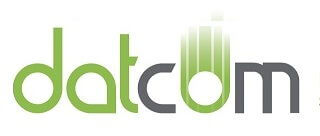Have you ever wondered how colleges and universities function at a technological level? With so many students, you might start to think about how these institutions secure data, ensure timely completion of degrees, and closely monitor student retention efforts, all in addition to the normal IT operations that you would see at any business.
The fact of the matter is that universities have a lot of industry-specific technology that goes into making a functional institution of higher education, and that’s without mentioning secure access to student records, maintaining the productivity suites in computer labs, and providing intuitive smart technology for better lectures. We know a guy who’s well-versed in the types of solutions utilized by institutions of higher education, and we think you might find what he has to say to be interesting.
Degree Progress Management
Each student that is matriculated into a degree program has to complete a set of requisite courses. These courses will vary drastically from program to program, but the fact remains that each student must complete these requirements if they hope to graduate with a degree. Some programs have electives (any course the student wants) or selectives (any course from a selected group of classes), which complicates the process of choosing classes and opens up the door for students to take courses that don’t necessarily fulfill their degree requirements.
To minimize the risk of this happening, real-time degree progress can be viewed through programs like DegreeWorks. This program can show students, faculty, and staff advisors how many credits and courses must be completed by a student, as well as which classes fulfill specific requirements. Students can even process “what if” reports, which can show them how their degree progress is affected by something like changing their major.
Student Retention
It’s not a stretch to say that some students enter higher education underprepared for the increased workload. Whether it’s because of students not knowing how to access the proper resources, needing educational supplements like tutors, or simply requiring a support system that the student doesn’t have at home or on-campus, student retention and persistence can be a challenge for many institutions.
In an effort to improve these statistics, student retention software can be used by faculty and staff to assign flags, create to-do lists, and make appointments with students who are in need of assistance or support. In this way, the support structure that many students need to succeed is both accessible and informative for them.
Online Learning
In today’s increasingly-connected world, online learning has become a viable alternative to traditional, or synchronous, learning. When we say “synchronous,” we mean the traditional lecture style of education, in which a student must be physically present in the classroom to participate in discussions. Asynchronous learning, which is significantly less structured and more of an “at your own pace” approach to education, has provided students with limited time and geographic resources an opportunity to learn at their own pace in a less structured environment.
Depending on the institution, the online learning application might be something like BlackBoard, Angel, or Brightspace, rebranded to suit the proprietary needs of the university. Either way, the end result is generally the same. Online learning uses a centralized environment for all of a student’s learning needs, providing access to message boards, learning modules, grade books, open educational resources, and so much more.
Again, we understand that not all of our readers have stakes in the education sector; we just wanted to share some interesting solutions that are used by professionals in this industry. Are there any other industries you want to learn more about? Let us know in the comments and be sure to subscribe for more great technology-related blogs.


